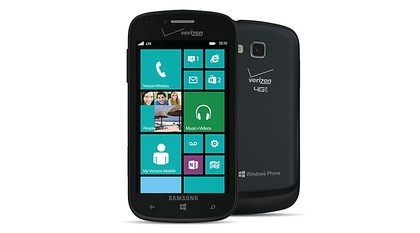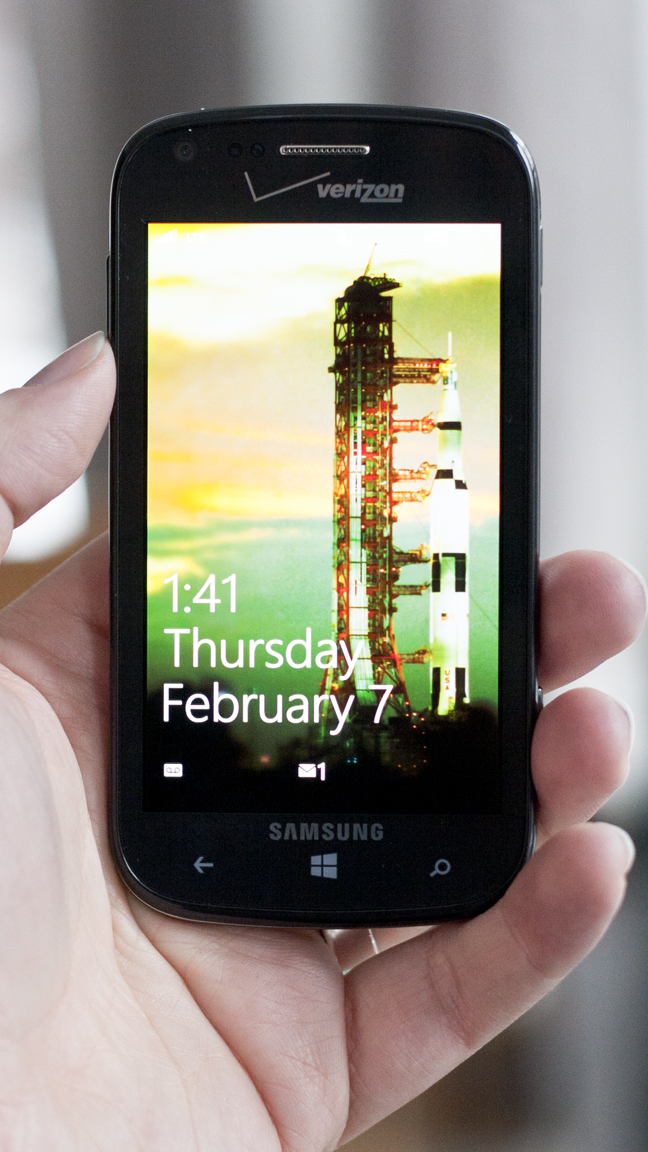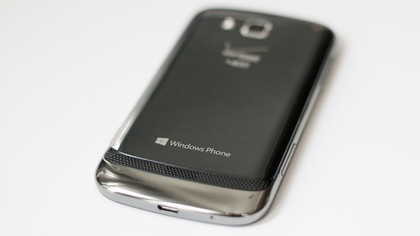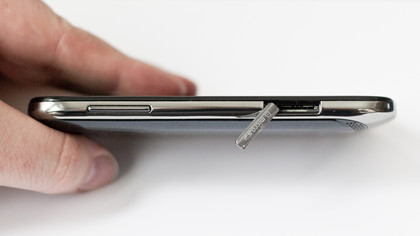TechRadar Verdict
As a lower-priced entry model into the world of Windows Phone 8, Samsung's Ativ Odyssey does a solid job of delivering the slick OS experience without lag, and Verizon's 4G LTE coverage ensures quality calls and data usage.
Pros
- +
Windows Phone 8 OS
- +
Smooth performance
- +
Verizon's strong LTE
- +
Great battery life
Cons
- -
Mediocre (low resolution) display
- -
Unremarkable design
- -
Lower-end 5MP camera
- -
Maps is a mess
- -
Weak app selection
- -
Only 8GB internal storage
Why you can trust TechRadar
With the initial rush of Windows Phone 8 devices now out for a couple of months and entrenched in the minds of potential converts to Microsoft's mobile OS (or those upgrading from WP7 handsets), we're now seeing a second wave of options, notably on the lower end of the entry price landscape. Case in point: the Samsung Ativ Odyssey, available exclusively on Verizon.
It's a budget option among Windows Phone 8 handsets, but the Ativ Odyssey isn't meek when it comes to performance. Samsung's device sports the same dual-core Snapdragon 1.5Ghz processor seen in other early WP8 devices, along with 1GB of RAM, allowing the vibrant OS to flow as fluidly as expected.

Compared to its WP8 brethren, however, the lower price point – $50 with a two-year agreement – comes with some limitations, namely a middling display, lower-resolution camera, and an unremarkable build that's unfortunately highlighted by cheap-feeling plastic on the back and sides. Whether those sacrifices level out with the savings over another device depends on what you want from the handset.
The Samsung Ativ Odyssey sports a fairly similar design as its flagship Galaxy line of Android devices, albeit on a smaller scale: it comes with a four-inch display, which runs at 480x800 and is covered by sturdy Gorilla Glass.

In fact, the build of the phone, with its rounded back and sides, actually feels a lot like an iPhone 3G/3GS in the hand, recalling memories of Apple designs from years past (surprise, surprise). The device is 4.82 inches tall, 2.5 inches across, and 0.43 inches thick.
Along with the display, the front of the Ativ Odyssey includes very large reflective silver logos for both Verizon and Samsung, which couldn't be more unnecessary on a relatively small device.
The latter logo in particular leaves little room for the Windows Phone soft touch buttons (Back, Start, and Search), which look and feel cramped as a result. While playing games and even just simply holding the phone, we'd often accidentally trigger the back or search button without trying, which can be particularly frustrating while gaming.

Meanwhile, the back looks like brushed metal but feels like the same plastic used for the glossy faux-metal sides and bottom. Another Verizon logo is here in case you forget the provider, along with a Windows Phone icon. The backing comes off without too much hassle thanks to a slit on the upper left, and within you'll find the sizeable, removable 2100 mAh battery, along with the SIM card slot.
On the left side of the phone is a volume rocker up top with a covered microSD slot near the bottom; it accepts cards up to 64GB in size, which you'll likely find handy with just 8GB of internal storage. The right side of the Ativ Odyssey has a power button and the physical camera shutter/access button, while the headphone jack is on the top of the phone and the USB port is located at the bottom.

While the 480x800 display is common for lower-end Windows Phone 8 devices, this one particularly disappoints. We were recently impressed by the solid clarity of the Lumia 810's screen at the same resolution on a slightly larger display, but the Ativ Odyssey's four-inch Super AMOLED screen shows its pixels throughout, whether you're looking at the Start screen, playing a game, or browsing the web.
It's distracting and easily the most disappointing feature of the device, making the handset seem dated from first glance when the internals are otherwise pretty good.
